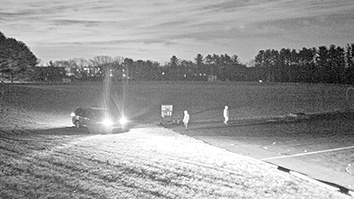Citation
Umlauf, B. J., Mercedes, J. S., Chung, C. Y., & Brown, K. C. (2014). Identification of a novel lysosomal trafficking peptide using phage display biopanning coupled with endocytic selection pressure. Bioconjugate Chemistry, 25(10), 1829-1837. doi: 10.1021/bc500326x
Abstract
Methods to select ligands that accumulate specifically in cancer cells and traffic through a defined endocytic pathway may facilitate rapid pairing of ligands with linkers suitable for drug conjugate therapies. We performed phage display biopanning on cancer cells that are treated with selective inhibitors of a given mechanism of endocytosis. Using chlorpromazine to inhibit clathrin-mediated endocytosis in H1299 nonsmall cell lung cancer cells, we identified two clones, ATEPRKQYATPRVFWTDAPG (15.1) and a novel peptide LQWRRDDNVHNFGVWARYRL (H1299.3). The peptides segregate by mechanism of endocytosis and subsequent location of subcellular accumulation. The H1299.3 peptide primarily utilizes clathrin-mediated endocytosis and colocalizes with Lamp1, a lysosomal marker. Conversely, the 15.1 peptide is clathrin-independent and localizes to a perinuclear region. Thus, this novel phage display scheme allows for selection of peptides that selectively internalize into cells via a known mechanism of endocytosis. These types of selections may allow for better matching of linker with targeting ligand by selecting ligands that internalize and traffic to known subcellular locations.


